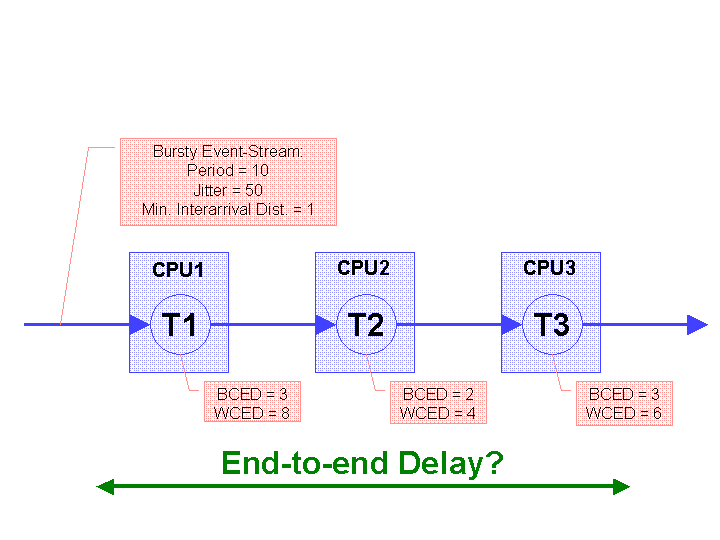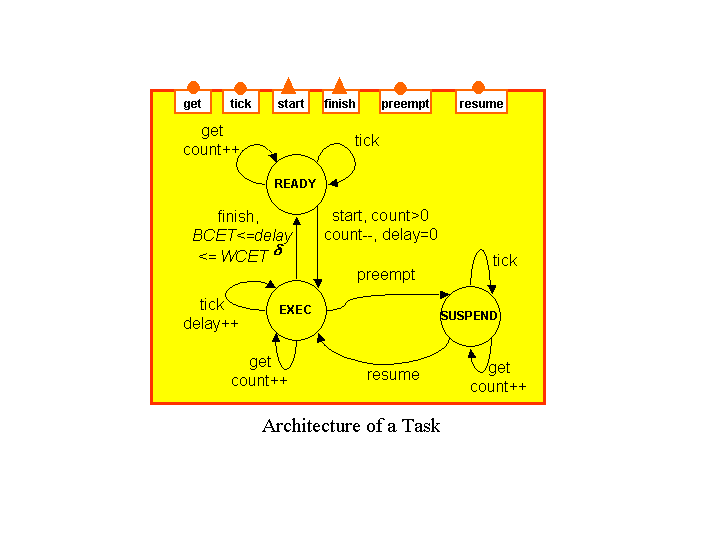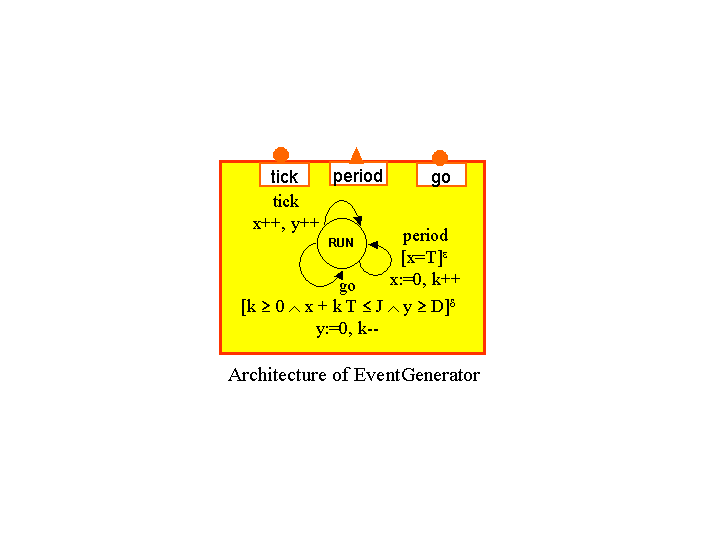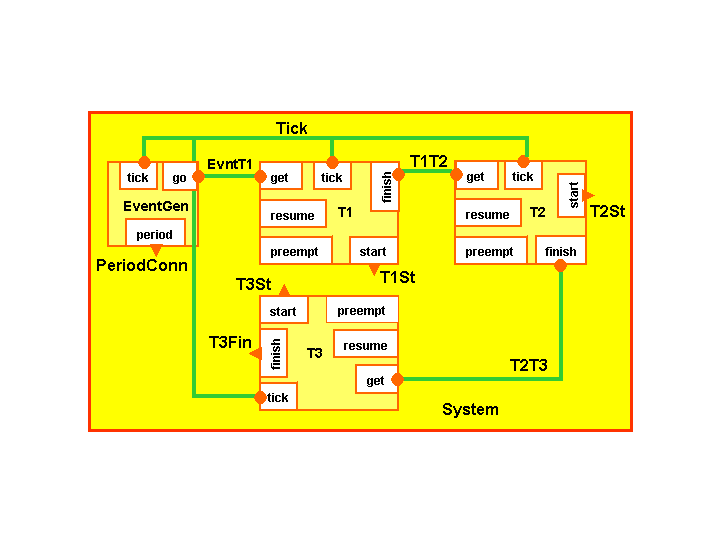BIP -- Incremental Component-based Construction of Real-time Systems
Tasks runing on dedicated CPU's
This is a performance evaluation problem with timed tasks processing events from a bursty event generator. (Source http://www.tik.ee.ethz.ch/~leiden05)
The model is a serial connection of a bursty event generator with three tasks T1, T2 and T3, running on independent CPU's. A task can execute as soon as its predecessor has finished. A task on completion
triggers an event for its successor. If the successor is busy, the event is queued. The block diagram for the model is shown below:

The atomic components for this model are 'Task' and the 'EventGenerator'. A generic timed model of 'Task' which can be used either as a simple task or as a preemptable task is shown below.

It has a timed variable 'delay' to enforce best case execution time (BCET) and worst case execution time (WCET).
The 'EventGenerator' component has a period T, jitter J, J>T, and has
a minimum inter-arrival time D between successive events generated.
Its model is as shown below.

The
compound component 'System' is a serial connection of the
EventGenerator and the three instances of Task, T1, T2 and T3 ,
as shoen in the architecture below. In this model, the tasks
are non-preemptable, so the ports 'preempt' and 'resume' are not
assiciated to connectors.

Running
an execution gives the end-to-end delay of each event processed by
the System, with details of the execution (CPU) time and waiting
time. Here time means the number of 'tick' transitions occurred.
Steps to execute the application:
To generate the C++ code for the application,
$ bipc -f task_a.bip --genC-top System
To compile the application,
$ make -f $BIP_HOME/util/Makefile task_a.bip.x
To run the execution,
$ task_a.bip.x
Ctrl-C to terminate.
Back to examples


